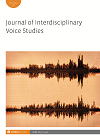
Full text loading...

This article discusses the authoritative voice in traditional Irish singing, examining voice in negotiation with prevailing and conflicting ideologies of practice in this context. Opening with a discussion on vocal identity and vocality in traditional Irish singing, autoethnography is used to present and critically examine an individual process of learning and voicing a macaronic song from the Irish tradition. Findings contribute to further understand the social, participatory and presentational dimensions of Irish traditional song as it is learned, performed and transmitted. Issues of vocal enculturation, identity and construction are negotiated as authoritative voice and stylistic efficacy are conceptualized in voicing Irish traditional song.

Article metrics loading...

Full text loading...
References


Data & Media loading...

Publication Date:
https://doi.org/10.1386/jivs_00064_1 Published content will be available immediately after check-out or when it is released in case of a pre-order. Please make sure to be logged in to see all available purchase options.